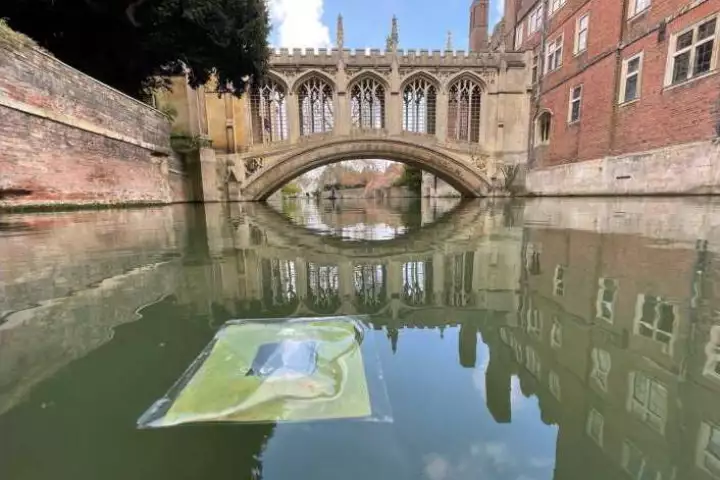Artificial Leaf
-
Hydrogen-producing artificial leaves might soon be even better at their jobs thanks to a new study that examined the effects of pressure on the chemical processes they run. It all comes down to bubbles.
-
Leaves are impressive machines, converting sunlight, carbon dioxide and water into energy. Cambridge scientists have now created artificial leaves that can float on water, tapping into sunlight above it and water below to efficiently produce fuels.
-
"Artificial leaf" systems could play a key role in the fight against climate change, and a team of engineers has just picked up the pace with a solution that captures carbon dioxide at 100 times the rate of current technologies.
-
Photosynthesis is one of nature’s most useful chemical reactions, so scientists often try to mimic it. Researchers have now developed a new way to make hybrid synthetic-living cells that can use photosynthesis to clear carbon dioxide from the air.
-
Researchers at Rice University have built a simple new solar-powered device that can create hydrogen for fuel by splitting water. It's similar to other “artificial leaf” designs but the team says it’s self-sufficient and relatively cheap to produce.
-
Artificial leaves can convert sunlight, water and carbon dioxide into energy or even be used to produce fuels. Now, researchers from Cambridge have developed a new version that can produce synthetic gas (or syngas) without releasing carbon dioxide.
-
Researchers from the Eindhoven University of Technology have fine-tuned an artificial leaf design and used it to produce drugs for the first time.
-
Over the last few years humans have tried to mimic nature with artificial leaves, but they’re never quite up to scratch. Now, researchers have designed a new version that could work under real-world conditions, sucking carbon dioxide out of the air and creating oxygen and synthetic fuels.
-
Already used to break water down into hydrogen and oxygen, and in turn create liquid fuels and electricity, artificial leaves now have another string to their bow. A Harvard team has turned artificial leaves into low-cost, portable fertilizer factories.
-
Leaves are kind of like nature’s power plants, converting sunlight into energy for the plant. Now a team at Eindhoven University of Technology is using artificial leaves to produce chemicals, which could lead to solar-powered “mini-factories” that can create drugs and chemicals almost anywhere.
-
Researchers at the Swiss Federal Laboratories for Materials Science and Technology (Empa) have developed a way to simulate photosynthesis using relatively low cost materials and a design based on the eye of a moth.
-
The "world's first practical artificial leaf" now has the ability to self-heal, enabling it to produce energy from dirty water.
Load More











